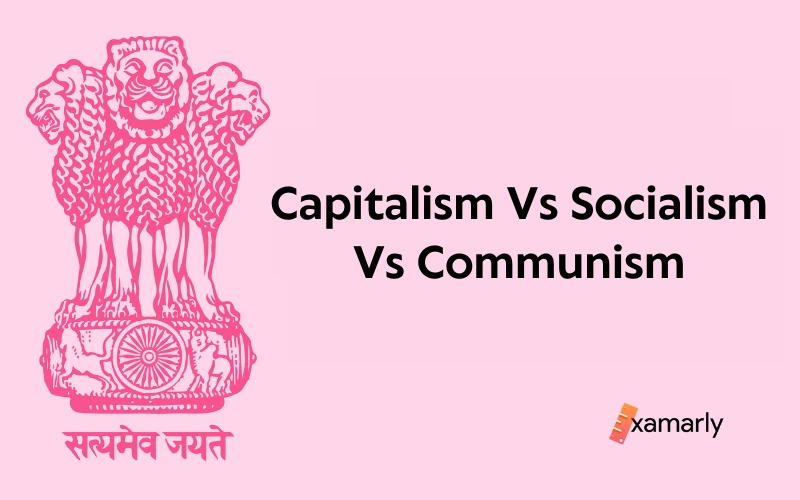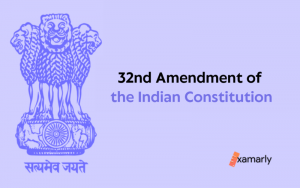Capitalism, Socialism and Communism are three economic and political ideologies that have been used throughout history to shape society and economic function. Capitalism is a system in which the means of production and distribution are privately owned and operated for profit.
Socialism is a system in which the means of production and distribution are collectively owned and operated for the benefit of all members of society.
Communism is a system in which all property and resources are owned and controlled by the state, and the distribution of goods and services is based on the principle of “from each according to his ability, to each according to his need.”
Each of these ideologies has unique strengths and weaknesses, and the debate over the best system for society is ongoing. This blog will help you understand these three ideologies’ similarities and contrasts. Let us get into the blog to know about the topics profoundly.
- What Is Capitalism
- History Of Capitalism
- What Are The Significant Characteristics Of Capitalism
- Government Structure In Capitalist Ideology
- Economy Of Capitalism
- Examples Of Capitalism
- What Is Socialism?
- History Of Socialism
- What Are The Significant Characteristics Of Socialism
- Government Structure In Socialist Ideology
- Economy Of Socialism
- Examples Of Socialism
- What Is Communism
- History Of Communism
- What Are The Significant Characteristics Of Communism
- Government Structure In Communist Ideology
- Economy Of Communism
- Examples Of Communism
- Capitalism Vs Socialism Vs Communism
- Closing Thoughts
- Frequently Asked Questions
- What are the key principles of capitalist and Socialist economies?
- What are the dissimilarities between socialism and communism?
- How does capitalism differ from communism and socialism?
- Does capitalism lead to greater economic inequality?
- What is the minor difference between socialism and communism?
- Can a capitalist system coexist with a socialist one?
What Is Capitalism
Capitalism is an economic and political system in which the means of production and distribution are privately owned and operated for profit. It is based on the principles of supply and demand, where individuals and businesses are free to produce and sell goods and services at prices determined by the market.
The government’s role in a capitalist system is generally limited to protecting property rights, enforcing contracts, and providing a legal framework for economic activity.
Under capitalism, businesses are incentivized to increase productivity and efficiency to maximize profits, which can lead to economic growth and increased wealth for individuals.
However, it also allows for income inequality as the market mechanism favours the ones who have more resources, and it can lead to boom and bust cycles.
It is important to note that there are different variations of capitalism, such as laissez-faire capitalism, where the government’s role is minimal, and welfare capitalism, where the government provides safety nets for those in need.
Related: Difference Between Capitalism And Socialism
History Of Capitalism
The origin of capitalism can be traced back to the 16th and 17th centuries in Europe, specifically in the Netherlands and England. The rise of mercantilism and trade, along with the decline of feudalism and manorialism, led to the development of a market economy and private property.
The concept of “capital” as a means of production and accumulation of wealth also emerged during this time. The Industrial Revolution in the 18th and 19th centuries further solidified the principles of capitalism, as factory production and the use of machines increased productivity and economic growth.
According to the Oxford English Dictionary, the first recorded use of the term “capitalism” in the English language can be found in William Makepeace Thackeray’s novel The Newcomes, published in 1854, where it refers to “having ownership of capital.”
Karl Marx’s division of labour is a key aspect of capitalist economic systems. He believed that capitalist societies are characterized by the separation of workers from the means of production, which leads to a division of labour where workers are assigned to perform specific tasks in the production process.
Marx argued that this division of labour leads to alienation, where workers are disconnected from the products of their labour and the broader society. He believed that this alienation is a key feature of capitalist societies and that it leads to exploitation, where workers are paid less than the value of their labour.
Read More: Difference Between Capitalism And Communism
What Are The Significant Characteristics Of Capitalism
The significant characteristics of capitalism include:
- Private ownership of the means of production: In capitalism, the means of production, such as factories, land, and resources, are owned by private individuals or businesses, rather than the state.
- Profit motive: The driving force of capitalism is the pursuit of profit, which drives economic growth and innovation.
- Competition: Capitalism is characterized by competition among businesses for consumers and resources.
- Market economy: Prices are determined by supply and demand in a capitalist economy.
- Limited government intervention: The government in a capitalist system generally has a limited role in the economy and does not intervene in the workings of the market.
- Consumer sovereignty: Consumers have the power to influence the economy by choosing which goods and services to buy.
- Dynamic Efficiency: Capitalism encourages innovation and progress through the constant pursuit of new ways to increase efficiency and reduce costs, leading to new products and services that improve the lives of people.
- Interconnectivity: Capitalism is driven by international trade and interconnectivity, where different countries and regions specialize in different goods and services and trade with each other.
Government Structure In Capitalist Ideology
The role of government in capitalism is a matter of debate among proponents of the economic system. While some argue for minimal government involvement, others support a more active role for government in the economy.
Anarcho-capitalists are the only exception, they believe that all of the functions of the state should be privatized and exposed to market forces. However, classical liberals, libertarians, and minarchists argue that capitalism is the best system of distributing resources, but that the government must exist to protect private property rights through the military, police, and courts.
In the United States, there are different views on the government’s role in capitalism among economists. Keynesian economists believe that capitalism largely works but requires government intervention to smooth out macroeconomic forces within the business cycle.
They support fiscal and monetary policy and regulations on certain business activities. On the other hand, Chicago-school economists tend to support minimal use of monetary policy and a lower level of regulation.
It’s worth noting that Capitalism is often contrasted with socialism, where the state owns the means of production and attempts to direct economic activity towards politically identified goals. However, many modern European economies are a blend of socialism and capitalism, which is often referred to as a public/private partnership with a planned economy.
Economy Of Capitalism
In a capitalist economy, the means of production, such as factories and land, are owned and controlled by private individuals and businesses rather than by the government. The economy operates according to market principles, with prices determined by supply and demand. Profit is the main motivation for businesses and individuals in a capitalist economy.
The government’s role in a capitalist economy is generally limited to protecting private property and enforcing contracts, but in practice, the level of government intervention varies from country to country. In some capitalist countries, the government provides various services and regulates certain industries, while in others, the government plays a smaller role.
In a capitalist economy, individuals have the effective freedom to start their businesses, invest their money as they see fit, and compete in the marketplace. This can lead to innovation and economic growth, but it can also lead to income inequality, as those with more resources and skills tend to be more successful.
Overall, a capitalist economy can be characterized by private ownership of the means of production, a market-based economy, and profit-oriented.
According to Karl Marx, the division of labour is a key aspect of capitalist economic systems. He believed that capitalist societies are characterized by the separation of workers from the means of production, which leads to a division of labour where workers are assigned to perform specific tasks in the production process. Marx argued that this division of labour leads to alienation,
Examples Of Capitalism
Some examples of capitalist economies include the United States, Canada, and the United Kingdom. These countries have economic systems in which private individuals and businesses own the means of production, and can make a profit by buying and selling goods and services in a free market.
What Is Socialism?
Socialism is an economic and political system in which the means of production, such as factories, land, and resources, are owned and controlled by the community as a whole, usually through the government.
The goal of socialism is to achieve greater economic and social equality among citizens by redistributing wealth and power.
In a socialist economy, the government plays a central role in directing economic activity and making decisions about the allocation of resources. This can be done through various means such as planning, public ownership of key industries, or worker cooperatives. The emphasis is on meeting the needs of society rather than maximizing profits for private control.
Socialism also advocates for more equal distribution and redistribution of wealth and opportunities. It often includes policies such as progressive taxation, social welfare programs, and workers’ rights.
It also promotes the idea of common ownership, which is the idea that natural resources and wealth should be shared and controlled for the benefit of all citizens, rather than being concentrated in the hands of a few.
It’s worth noting that there are different forms of socialism, and the specific policies and practices of a socialist government can vary depending on the country and the political system in place.
History Of Socialism
The origins of socialism can be traced back to the early 19th century, with the rise of industrialization and urbanization in Europe. The Industrial Revolution brought about significant changes in the way goods were produced and led to the growth of a new working class of industrial workers who often faced poor working conditions and low wages.
The earliest forms of socialism emerged as a response to these social and economic changes. One of the first thinkers to propose socialist ideas was the French philosopher Charles Fourier, who advocated for the establishment of “phalanstères,” or communes where people would live and work together cooperatively.
Another key figure in the early development of socialism was Robert Owen, a Welsh industrialist who proposed the idea of “villages of cooperation,” where workers would be treated fairly and receive a fair share of the profits.
The ideas of these early socialists were further developed by Karl Marx and Friedrich Engels in their Communist Manifesto (1848). They proposed the idea of a “classless society” in which the means of production are collectively owned and controlled by the working class, and advocated for a revolution to overthrow capitalist societies and establish a socialist system.
What Are The Significant Characteristics Of Socialism
The significant features of socialism include:
- Collective ownership: The means of production, such as factories, land, and resources, are owned and controlled by the community as a whole, usually through the government.
- Central planning: Economic activity is directed and coordinated by the government, which makes decisions about the allocation of resources and the distribution of goods and services.
- Economic equality: Socialism aims to achieve greater economic and social equality among citizens by redistributing wealth and power.
- Emphasis on social welfare: Socialist systems often include policies such as progressive taxation, social welfare programs, and workers’ rights to ensure a basic standard of living for all citizens.
- Public services: Education, healthcare, and other basic services are often provided by the government in a socialist system.
- Reduction of income inequality: Socialism aims to reduce the income gap between the rich and the poor by implementing progressive taxation and wealth redistribution policies.
- Democratic control: Socialism often emphasizes the democratic control of society, with citizens having the right to participate in the decision-making process through the means of worker’s councils, co-operatives or other forms of democratic participation.
- Abolition of exploitation: Socialism aims to abolish the exploitation of workers by capitalists and to create an economy that works for the benefit of all citizens.
Government Structure In Socialist Ideology
The government structure in socialist ideology is characterized by a strong state presence in the economy and society, with the government playing a central role in directing economic activity and making decisions about the allocation of resources.
The government controls key industries and resources and often owns and operates them directly. The government also plays a major role in redistributing wealth and ensuring social welfare.
In traditional socialist systems, the government is often a single-party state, with the ruling party having a monopoly on political power. This party is typically controlled by a small group of leaders, who make decisions on behalf of the entire population.
In some socialist countries, the government is also a one-party state and the ruling party is the only legal political party.
In some forms of socialism, the government is democratically elected, but the economy is centrally planned. This means that the government makes decisions about what goods and services will be produced, how they will be produced and for whom. The government also sets prices and wages and often controls the distribution of goods and services.
In democratic socialism, the government is elected through democratic means, and there is a multi-party system. The government plays a major role in the economy and society, but it does not own and control all of the means of production. The government also focuses on creating a welfare state to ensure a basic standard of living for all citizens.
It’s worth noting that different forms of socialism can have different variations and implementations of government structure, and the specific policies and practices of a socialist government can vary depending on the country and the political system in place.
Economy Of Socialism
In a socialist economy, the means of production, such as factories and land, are collectively or publicly owned and controlled, rather than by private individuals or businesses. The government plays a larger role in the economy, and the goal is to reduce economic inequality and provide for the needs of all members of society.
The economy operates under a mixed system, where the government may control certain key industries or resources while leaving some aspects of the economy to operate under market principles. Profit is not the main motivation, but a secondary one.
The government in a socialist economy is responsible for planning and directing the economy to ensure that the basic needs of all citizens are met.
This may include providing healthcare, education, and other social services, as well as setting wages and prices for certain goods and services. Unpaid labour in socialism is not an ideal concept and most socialist theorists argue that exploitation and unpaid labour should not exist in a socialist society.
In a socialist economy, there is often less emphasis on individual freedom and private property, and more emphasis on the collective good.
This can lead to greater economic equality and a stronger safety net, but it can also lead to inefficiencies and a lack of incentives for innovation and hard work. Unpaid labor in socialism is not an ideal concept and most socialist theorists argue that exploitation and unpaid labor should not exist in a socialist society
Overall, a socialist economy can be characterized by collective or public ownership of the means of production, a mixed economy, and less profit-oriented than a capitalist economy.
Examples Of Socialism
Some examples of socialist economies include Cuba, China, and the former Soviet Union. These countries have economic systems in which the means of production are owned and controlled by the government or by the workers, and resources are distributed according to the needs of the people, rather than through a market system.
However, it is important to note that the degree of socialism can vary greatly among countries, and some countries may have mixed economies that incorporate elements of both capitalism and socialism.
What Is Communism
Communism is a political and economic ideology that advocates for the establishment of a classless, stateless society in which the means of production are collectively owned and controlled by the community as a whole.
The ultimate goal of communism is to create a society in which everyone has equal access to the resources and wealth they need to meet their basic needs.
History Of Communism
The origins of communism can be traced back to the work of Karl Marx and Friedrich Engels in the mid-19th century. Marx and Engels developed the theory of communism as a response to the social and economic changes brought about by the Industrial Revolution.
They believed that the capitalist system, which was based on private control of the means of production, would inevitably lead to the exploitation of the working class and the concentration of wealth in the hands of a small capitalist elite.
In their famous book, the Communist Manifesto (1848), Marx and Engels outlined their vision of a classless, stateless society in which the means of production are collectively owned and controlled by the working class.
They believed that this could be achieved through a revolution in which the working class would overthrow the capitalist class and establish a socialist society.
This society would then evolve into a communist society, in which the state would gradually wither away and society would be organized on the principle “From each according to his ability, to each according to his needs.”
It’s worth noting that communism as an ideology has undergone significant evolution over the centuries and different forms of communism have been implemented in various countries with different outcomes.
What Are The Significant Characteristics Of Communism
Collective ownership of the means of production refers to the idea that in a communist society, the means of producing goods and services such as factories, land, and resources, would be owned and controlled by the community as a whole, rather than by individuals or private companies.
Abolition of private property means that private ownership of property would be abolished and all property would instead be owned by the community. This would eliminate the concept of personal property and the ability to accumulate wealth.
No social class is a goal of communism, where everyone would have equal access to resources and opportunities. This would eliminate class distinctions such as the rich and the poor.
Centralized control of the economy by the state refers to the idea that the government would make all economic decisions rather than leaving them to the free market. This would include decisions on what goods and services to produce, how to produce them, and how to distribute them.
Distribution based on need refers to the idea that goods and services would be distributed based on the needs of the people, rather than on their ability to pay. The goal is to ensure that everyone’s basic needs are met, regardless of their financial status.
The ultimate goal of communism is to create a society where all individuals work together for the common good, where there is no exploitation of one class by another, and where the needs of all individuals are met.
Related: Difference Between Socialism And Communism
Government Structure In Communist Ideology
In communist ideology, the government structure is based on the idea of a dictatorship of the proletariat, which means the working class holds the power and makes decisions for society as a whole.
The government would be a one-party state, with a centralized system of governance, where all power is held by a small group of individuals who make decisions on behalf of the entire society. This group is typically led by a single leader, such as a president or general secretary.
The communist government would also be responsible for central planning and controlling the economy. This would include making decisions on what goods and services to produce, how to produce them, and how to distribute them.
The government would also be responsible for ensuring that the needs of the people are met and that the principles of communism are upheld.
In practice, the government structure of communist countries has varied, some have been single-party states with a central government, and others have been multi-party states with a central government. In some cases, the government was led by a single leader, while in others it was led by a collective leadership.
It’s worth noting that, in practice, the communist party have been authoritarian, with limited political freedoms and human rights, and has been known for repressing dissent and opposition.
Economy Of Communism
In a communist economy, the means of production, such as factories, land, and economic resources are owned collectively by the community as a whole and controlled by the government.
The economy operates under a centrally planned system, where the government makes all economic decisions on what goods and services to produce, how to produce them, and how to distribute them. The profit is eliminated.
The government plays a central role in directing the economy to ensure that the basic needs of all citizens are met. This includes providing healthcare, education, and other social services, as well as setting wages and prices for goods and services.
Countries that have implemented a communist system of government, such as the Soviet Union and China, have chosen to implement a centrally planned economy, also known as a command economy.”
The distribution of goods and services is based on the needs of the people, not on the ability to pay. The ultimate goal of a communist economy is to create a classless, equal society where the needs of all individuals are met.
In theory, a communist economy can lead to greater economic equality and more efficient use of natural resources, but in practice, communist economies have struggled with inefficiencies, a lack of incentives, and a lack of innovation.
Overall, a communist economy can be characterized by collective ownership of the means of production, a centrally planned economy, and no profit motivation.
Examples Of Communism
Communism is an economic and political ideology that advocates for social ownership and control of the means of production and the elimination of private ownership.
Historically, examples of countries that have attempted to implement communist economic systems include the Soviet Union, China, Vietnam, and Cuba.
However, it’s important to note that these countries have evolved and implemented a different types of economic systems, they may be considered mixed economies. It is also worth noting that, the way communism was implemented in these countries was very different from the original theory and it was far from being a true communist economy.
Capitalism Vs Socialism Vs Communism
| Comparison Criteria | Capitalism | Socialism | Communism |
|---|---|---|---|
| Ownership of the means of production | Private | Collective/Public | Collective |
| Role of government | Limited | Increased | Centralized |
| Economic system | Market-based | Mixed economy | Centrally planned |
| Distribution of wealth | Based on individual effort and abilities | More equal distribution | Equal distribution |
| Social class | Present | Reduced | Eliminated |
| Profit motive | Central | Secondary | Eliminated |
It’s worth noting that this is a general comparison and that there are different variations and interpretations of Capitalism, Socialism and Communism, and there are different examples of countries and systems that are labelled with these ideologies but their implementations vary.
Closing Thoughts
In conclusion, Capitalism, Socialism, and Communism are three different economic and political ideologies with distinct approaches to the ownership and control of the means of production, the role of government, and the distribution of wealth and resources.
It’s important to understand the fundamental differences between these ideologies to have an informed and nuanced perspective on current and future economic policies. In this blog, we have discussed important aspects of these three ideologies, hope it has given you a broader perspective and deeply analysed the impacts.
Frequently Asked Questions
What are the key principles of capitalist and Socialist economies?
The fundamental distinction between capitalism and socialism lies in the ownership and control of the means of production.
In capitalism, the means of production are owned by private individuals and businesses, while in socialism, they are collectively or publicly owned.
What are the dissimilarities between socialism and communism?
The main difference between socialism and communism is the level of government control over the economy.
In socialism, the government plays a larger role in the economy, but there are still some private ownership and market principles. In communism, the government has complete control over the economy and there is no private ownership.
How does capitalism differ from communism and socialism?
Capitalism differs from communism and socialism in terms of the ownership of the means of production, the role of the government, and the distribution of wealth.
In capitalism, the means of production are privately owned, the government has a limited role in the economy, and the distribution of wealth is based on individual effort and abilities.
In communism and socialism, the means of production are collectively or publicly owned, the government plays a larger role in the economy, and the distribution of wealth is more equal.
Does capitalism lead to greater economic inequality?
Capitalism can lead to greater economic inequality, as those with more resources and skills tend to be more successful in the marketplace. However, the degree of inequality varies depending on the specific economic and political policies of a country.
What is the minor difference between socialism and communism?
Socialism and communism are not the same, but they share some similarities. Both systems advocate for collective or public ownership of the means of production and a larger role for the government in the economy.
However, socialism allows for a mixed economy and some degree of private ownership, while communism calls for the elimination of private ownership and a centrally planned economy.
Can a capitalist system coexist with a socialist one?
A capitalist system and a socialist system can coexist to some degree in a mixed economy, where some aspects of the economy are operated according to market principles and others are controlled by the government.






